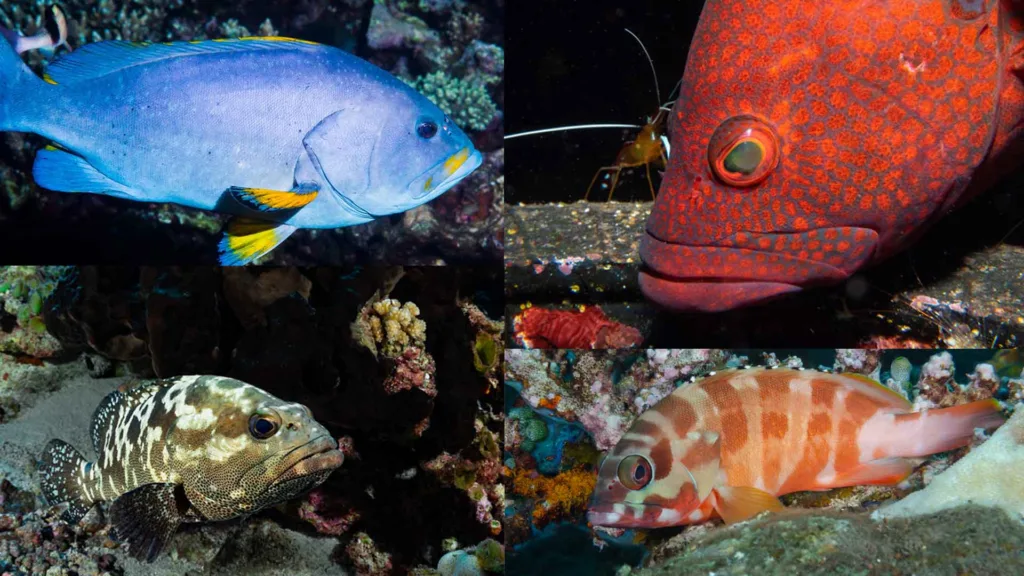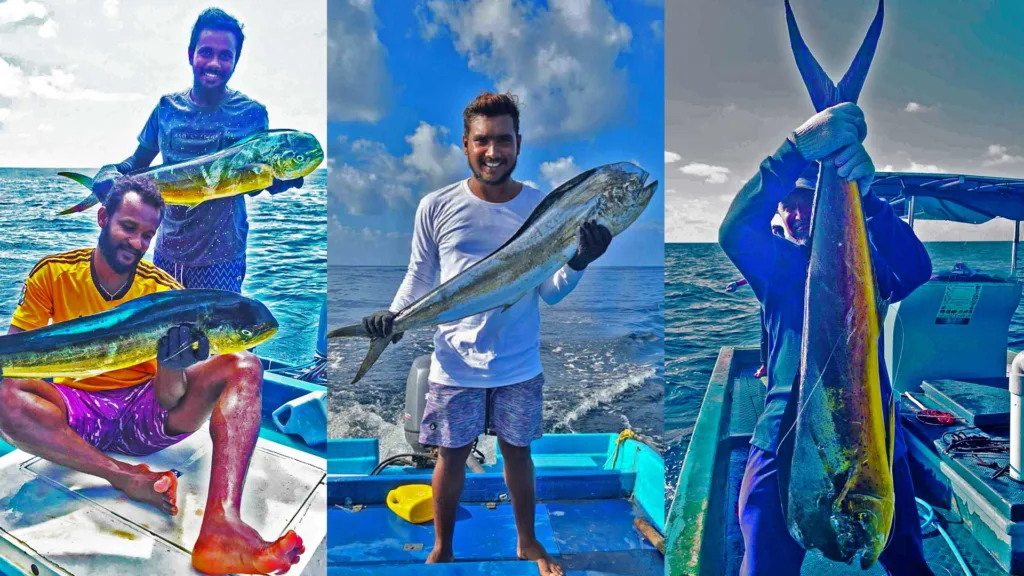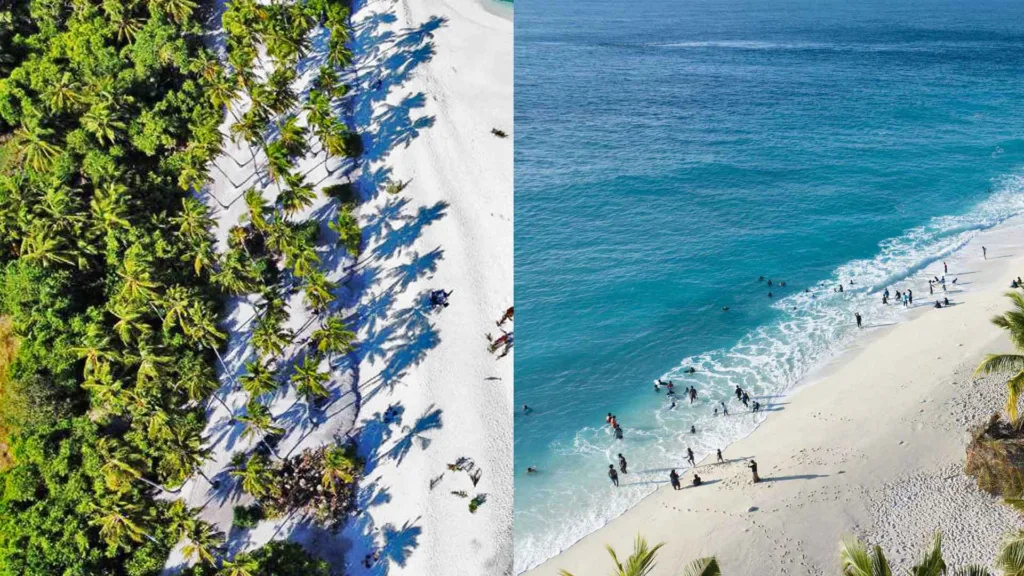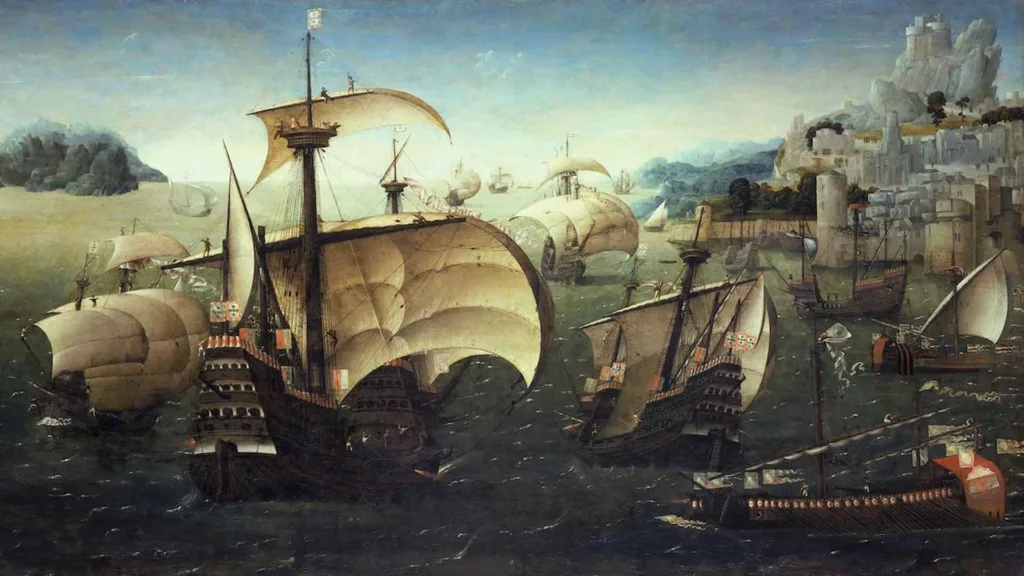
The Maldives was once rich in ambergris, pearls, spices, coconuts, dried fish, and, most importantly, cowrie shells. The beautiful archipelago was also vulnerable to foreign powers, and the Portuguese took control of the Maldives in the mid-16th century. However, Male’ fell to the Portuguese, costing them lives and property. The current global wars show that even superior powers face unprecedented levels of devastation and agony when fighting militarily weaker countries.
Portuguese imperialism
War and commerce were the two primary driving forces of Portuguese imperialism. In 1501, Pedro Álvares Cabral, a famous Portuguese commander, reported to the Portuguese government in Lisbon that Muslim merchants were controlling the Asian trade. And, to penetrate and achieve Portuguese goals, guns and sails became a priority in their imperialist doctrine.
Then they intended to conquer this part of Asia. The Portuguese built ships with superior firepower. Their military ships were called carracks or naus. They eventually developed more advanced cannons and ships than the Indians and Chinese did. Historians Sanjay Subrahmanyam and Geoffry Parker assert that the Portuguese developed this weaponry differently, despite its familiarity in Asia. The Portuguese advanced gunpowder technology, even though the Chinese were the first to develop it.
The Indian guns were large (known as Malik-i-Maidan). But even these large Indian-made bombards were of inferior quality. Several Indian attacks on Portuguese ships and fortifications demonstrated that gunpowder artillery was not as effective as expected. The Portuguese firepower was significantly stronger.
Attacks on Male’
The Portuguese made their first attempt in 1552. Their forces, led by Eitor de Souza de Ataide, sailed to Male’ to bring some Maldivian nobles to Cochin for Christian conversion. But the Maldivian Sultan, Ali Rasgefaanu, sends a Maldivian force to confront the Portuguese. The Portuguese vessel was stopped, and weapons were seized. In 1153, there was another attempt, but the Maldives was able to repel it.
The Portuguese successfully invaded the Maldives in 1558. They attacked Male’ with a larger force, led by Andreas Andre (Andiri Andirin). This battle ended on May 19, 1558, with the death of Ali Rasgefaanu. The Portuguese ruled the Maldives for 15 years.
However, Portuguese rule came to an end when Muhammad Thakurufaanu al-Auzam and his men attacked Male’ at night, killing Andreas André. According to historical records, the Portuguese stronghold fell at dawn. Maldivian islands confiscated several weapons.
Following their liberation, the Portuguese made another attempt to invade the Maldives in 1631 or 1632. On this occasion, 15 ships arrived in Malé and launched an attack.
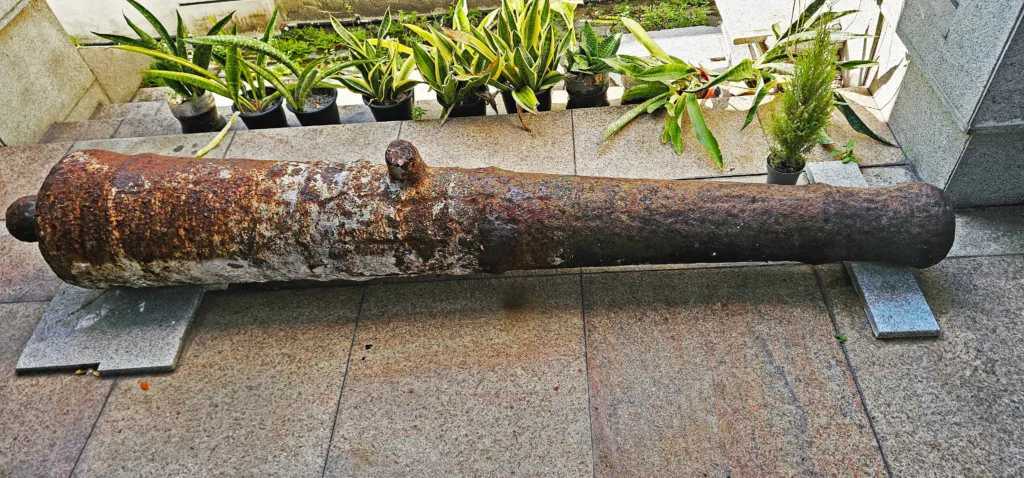
Domingos Ferreyra Belliago was the commander of the Portuguese fleets. However, Muhammad Imaduddin I, the sultan of the Maldives, fortified his defences prior to the fleet’s arrival in Male’ through the receipt of warnings. The Maldivian forces attacked the Portuguese fleet with ships, and Male’ was surrounded by reefs and rocks. The Portuguese also attacked Male in 1650. During the attack, Sultan Ibrahim Iskandar I quickly prepared the Maldivians to fight. When the Maldivians opened fire, they caused extensive damage to the Portuguese forces. They failed and withdrew their fleet.
The weapons used by the Portuguese
Many Portuguese ships were equipped with breech loaders. One of their most powerful weapons was the Portuguese heavy muzzle-loading cannon. It was an important part of their imperial expansion and defence. Their arsenal included culverins (large cannons), falconets, swivel guns, and bombards. They also used bronze cannons to besiege places.
These cannons were also used in naval battles against enemy vessels. The falconets were calibre guns mounted on the ship’s decks. These guns were used to target enemy soldiers. This weapon was primarily used on smaller, faster ships. Swivel guns that can rotate 360 degrees were also used. These guns were deployed on both ships and land.
Captured weapons were deployed at Male’
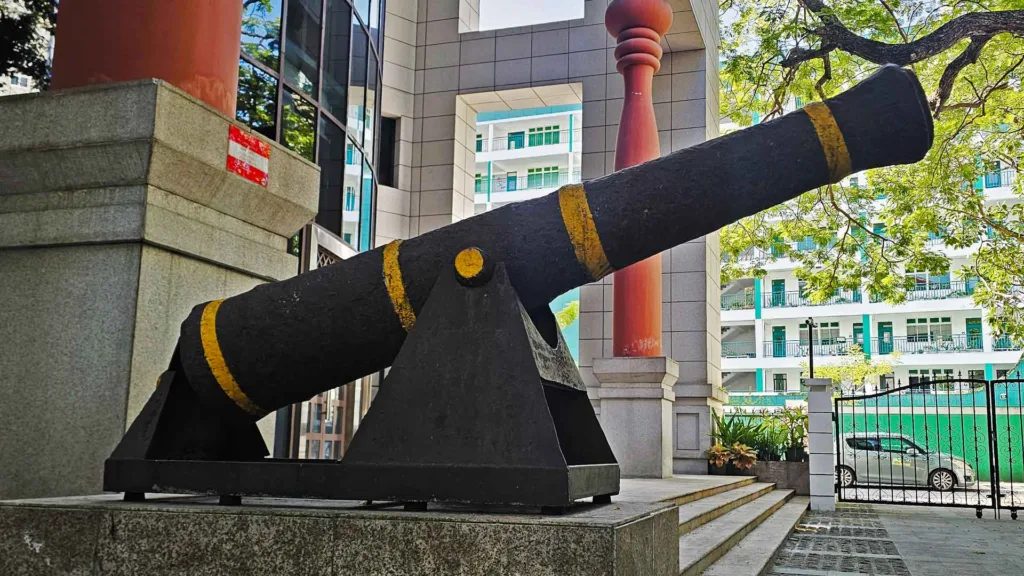
During these battles, Maldivian forces seized Portuguese weapons such as cannons and guns, which were then strategically deployed on Male’. Sultan Mohamed Imaddudin I, who reigned later, built a fortified wall around the northern part of Malé using guns captured from the Portuguese to defend against future invaders.
Maldivian sources and Portuguese records don’t give a complete inventory, but historians agree on the types of weapons the Maldivian islanders captured from Portuguese soldiers and garrisons during the 16th-century conflicts. Matchlock guns (“espingardas”) were used, and Maldivians are recorded as having captured firearms and gunpowder stores. Swords, cutlasses, falconets (light cannons) and swivel guns were also confiscated. The most significant weaponry seized in all of these conflicts was cannons.

